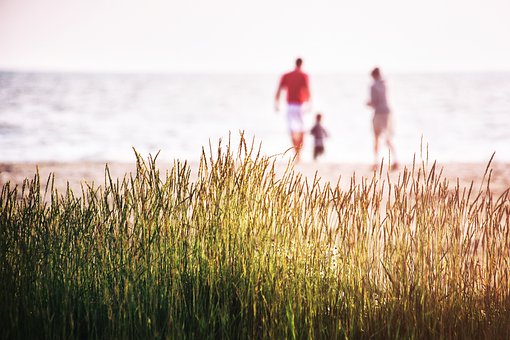Hotels today are doing something beautiful: they’re no longer anonymous places that look the same everywhere. Instead, many properties — from big-city boutique hotels to small-town suites — are intentionally using local culture as the backbone of their design. This approach creates distinctive stays, supports communities, and deepens guests’ travel experiences. Below I explain the why and how, offer practical design strategies, and show what it looks like in practice (including how smaller markets such as Orange City, Iowa, can benefit).
Why Local Culture Matters in Hotel Design
- Authenticity Sells. Travelers increasingly seek authentic experiences. A hotel that reflects its region gives guests a genuine sense of place — something a standardized chain room can’t match.
- Brand Differentiation. Cultural design differentiates properties in a crowded market. A unique narrative helps with marketing, guest loyalty, and word-of-mouth.
- Economic & Social Impact. Sourcing locally and partnering with local artists keeps revenue in the community, creates jobs, and preserves traditions.
- Sustainability. Using vernacular materials and local crafts often reduces transport emissions and encourages sustainable building practices.
- Memorability & Storytelling. A hotel that tells a local story becomes a destination in itself, increasing bookings and positive reviews.
Five Ways Hotels Embed Local Culture into Design
1. Architecture & Site-Specific Planning
Many hotels begin the cultural process with the building itself. Designers consider local climate, landscape, and historic building typologies. This can mean:
- Using local masonry styles, rooflines, and window shapes inspired by regional vernacular architecture.
- Orienting buildings to take advantage of local views or daylight patterns, respecting how the community traditionally sits in its environment.
Practical tip: A property in a Midwestern town might reference farmhouse proportions or grain-silo silhouettes; in coastal towns, low, wind-resistant forms and porches can echo maritime traditions.
2. Materiality & Craftsmanship
Choosing materials and makers from the region makes design feel rooted:
- Wood species, stone, brick, textiles, and finishes that are locally abundant create a tactile link to place.
- Commissioning local artisans for furniture, lighting, tiles, and artwork adds provenance.
Benefit: Guests notice and value handcrafted details; procurement of local craft builds economic resilience for the community.
3. Art, Storytelling & Place-Making
Art can tell local stories quickly and memorably:
- Permanent installations that reflect local history, folklore, or industries.
- Rotating exhibits by local artists, photographers, or historians that keep the hotel fresh and connected to cultural life.
- In-room storytelling: welcome books, curated playlists, or QR-enabled audio tours that explain local places and people.
Example application: A hotel in a farming community can host photography of harvests, oral histories, and an interactive map of nearby family farms.
4. Food & Beverage — The Cultural Core
Dining is one of the most direct ways a hotel can express local culture:
- Menus that feature regional ingredients and traditional recipes reimagined for today’s diners.
- Beverage programs showcasing local breweries, distilleries, or winemakers.
- Collaborations with local chefs and culinary schools.
Why it matters: Food creates sensory memories — taste and smell are powerful anchors for guest experiences.
5. Programming, Experiences & Community Partnerships
Cultural design extends beyond physical spaces into curated experiences:
- Workshops led by local artisans (pottery, weaving, woodwork).
- Guided cultural tours, storytelling nights, or seasonal festivals hosted at the property.
- Internships and training programs for local students in hospitality and cultural preservation.
Result: Hotels become nodes for cultural exchange, not just places to sleep.
Design Elements Guests Notice (and Remember)
- Lobby as Living Room: The lobby becomes a community living room with locally designed furniture and rotating art.
- Guestroom Accents: Local fabrics for upholstery, bedside books about the region, and artisanal toiletries tell a quieter story.
- Public Spaces: Courtyards, gardens, and terraces that use native plantings link guests to the landscape.
- Signage & Wayfinding: Using local languages, symbols, and traditional typography enhances authenticity.
- Lighting & Acoustics: Lighting schemes and acoustics that reflect local rhythms — calm, warm, and human-scaled — nurture comfort and hospitality.
Case Study Approach: How Small-Town Suites Can Leverage Local Culture
Consider a small Midwestern market — for example, Hotel Suites Orange City Iowa or properties advertising Cheap Jacuzzi Suites in Orange City Iowa. These markets offer fertile ground for culturally-driven design because:
- Strong Local Identity: Small towns often have deep historical roots, festivals, and clear cultural markers (architecture, music, food).
- Lower Cost of Implementation: Commissioning local crafts and sourcing regionally can be more budget-friendly than importing premium urban finishes.
- Competitive Advantage: Guests searching for “Hotel Suites Orange City Iowa” or “Cheap Jacuzzi Suites in Orange City Iowa” will be comparing options — a culturally rich property stands out.
- Year-Round Appeal: Adding cultural programming (e.g., harvest festivals, folk music weekends) can reduce seasonality and increase occupancy.
Practical, budget-friendly ideas for small-town suites:
- Offer themed suites that celebrate local stories (e.g., “Harvest Suite,” “Prairie View Suite”) with curated decor, local art, and story cards.
- Provide inexpensive but meaningful amenities: locally made soap, regional snacks, or a map of historic walking routes.
- Create a “Jacuzzi Suite” package that includes locally sourced sparkling wine or a small gift from a local artisan — that’s how Cheap Jacuzzi Suites in Orange City Iowa can feel premium without a high price tag.
- Partner with local tourism boards to cross-promote cultural events and discounted stay-and-experience packages.
Operational & Marketing Strategies
Aligning Operations with Design
- Train staff on local history and storylines so they can be ambassadors.
- Integrate local suppliers into procurement systems.
- Track the social and economic impact of local sourcing to report benefits to the community.
Measuring Success: KPIs to Watch
- Occupancy & ADR (Average Daily Rate): Are culturally-enhanced rooms commanding better occupancy or ADR?
- Direct Bookings: Is the hotel seeing more searches and direct conversions from targeted landing pages?
- Guest Satisfaction: Use post-stay surveys to ask about the cultural elements guests enjoyed.
- Local Economic Impact: Track percent of procurement spent locally and number of local hires or vendor partnerships.
- Social Media & Press: Measure mentions, shares, and earned media focusing on cultural programming.
Challenges & How to Overcome Them
Challenge: Cultural tokenism — superficial use of local motifs without true engagement.
Solution: Engage local leaders, artists, and historians from concept stage to ensure authenticity.
Challenge: Higher upfront costs for commissioning quality local work.
Solution: Phase installations, prioritize high-impact public spaces, and communicate the story to guests as part of value.
Challenge: Balancing tourist demand and community capacity.
Solution: Design for seasonality, limit high-impact activities, and reinvest permit or event revenues into infrastructure.
Examples of Guest-Facing Content
- Landing page headline: Hotel Suites Orange City Iowa — Comfort With Local Character
- Room page: Cheap Jacuzzi Suites in Orange City Iowa — Relax in Local Style
- Blog post ideas:
- “Top 7 Local Artists to See Near Hotel Suites Orange City Iowa”
- “How to Spend a Weekend in Orange City: Music, Markets, and Cozy Jacuzzi Suites”
- Image alt text suggestions:
- “Lobby with locally made wooden bench at Hotel Suites Orange City Iowa”
- “Couple enjoying a Jacuzzi in Cheap Jacuzzi Suites in Orange City Iowa”
FAQs
Q: What makes a culturally designed hotel different?
A: Culturally designed hotels integrate architecture, art, food, and programming that reflect a destination’s history and people, offering guests an immersive sense of place.
Q: Are culturally designed hotels more expensive?
A: Not necessarily. While bespoke artisan work can add cost, many hotels balance budgets by prioritizing high-impact areas and partnering with local makers, which can be cost-effective — even for Cheap Jacuzzi Suites in Orange City Iowa.
Q: How can I find culturally authentic hotel suites?
A: Look for properties that highlight local partnerships, list artisan contributors, or publish local guides. For example, search terms like Hotel Suites Orange City Iowa will help you find suites in that town; add “local art” or “locally sourced” to refine results.
Q: Why should local communities support hotels using regional design?
A: When done responsibly, local design strategies create jobs, preserve craft traditions, and drive tourism revenue into the community.
Final Thoughts & Actionable Steps
Hotels that embrace local culture create richer guest experiences and more resilient local economies. Whether you’re designing a flagship boutique in an urban center or operating Hotel Suites Orange City Iowa or Cheap Jacuzzi Suites in Orange City Iowa, the same core principles apply: collaborate with the community, prioritize authenticity, and tell a clear story at every guest touchpoint.
If you’re a hotelier: start small — commission a local artist for a statement piece, add a regional item to your welcome tray, and rewrite your room descriptions to tell the story behind each artifact.
If you’re a traveler: seek out properties that tell their place-based story — they’ll give you memories that go beyond a good night’s sleep.



